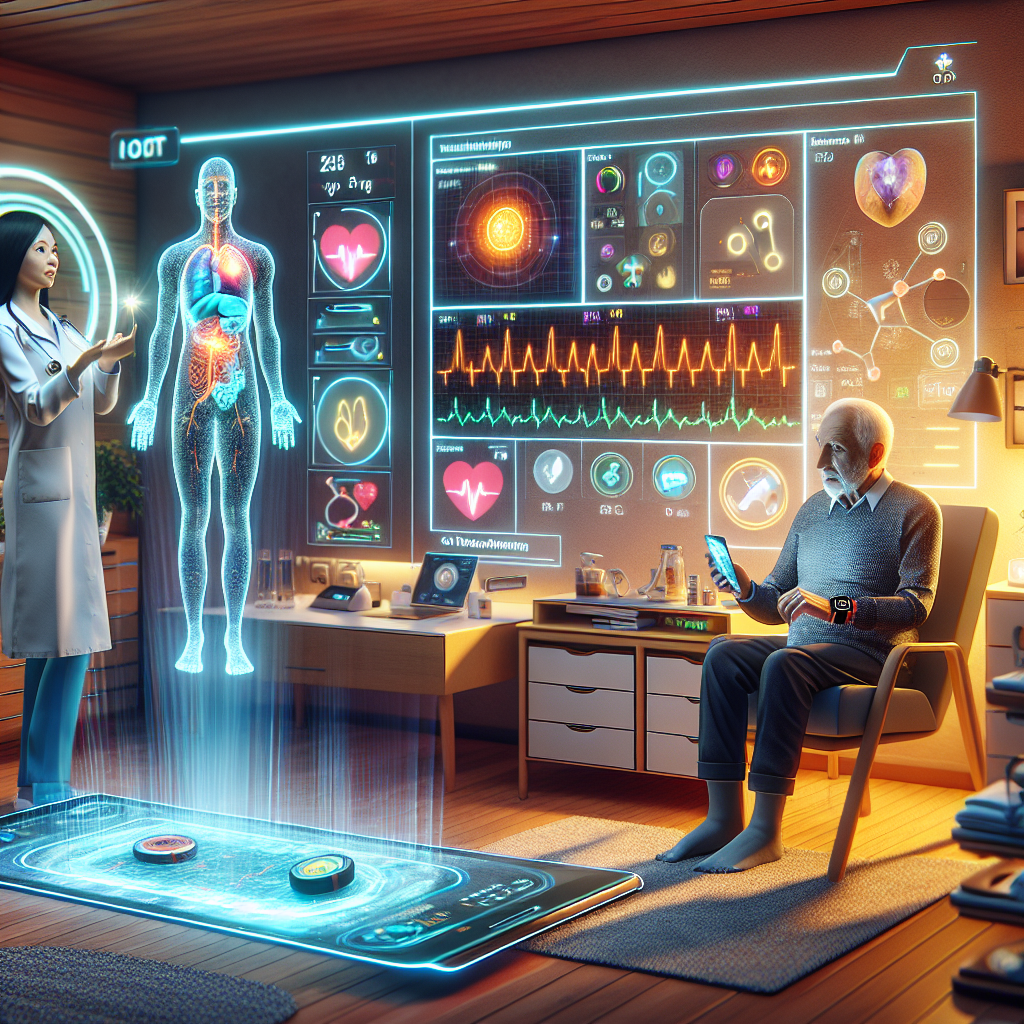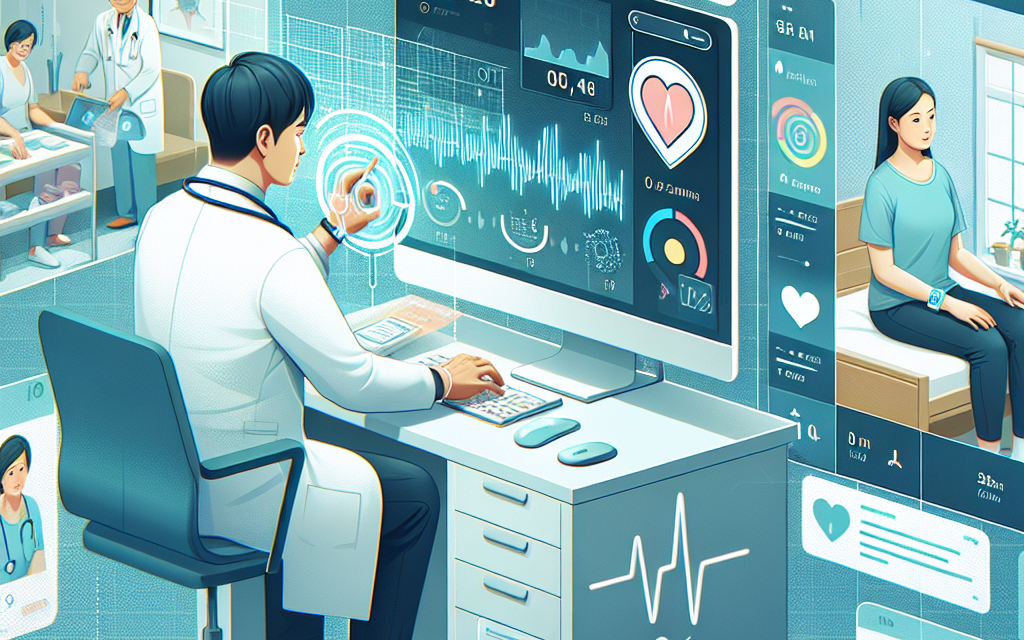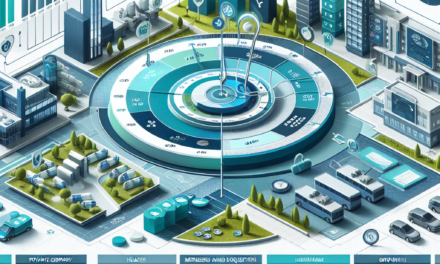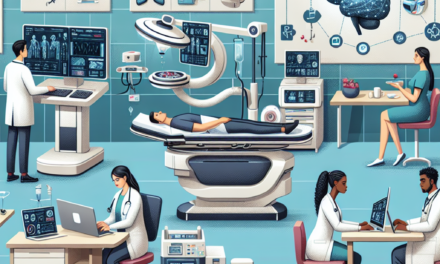Revolutionizing Remote Patient Care with IoT Technology

The healthcare industry is undergoing a significant transformation, driven by the integration of Internet of Things (IoT) technology. This revolution is particularly evident in remote patient care, where IoT devices are enhancing the quality of care, improving patient outcomes, and reducing healthcare costs. This article explores the various facets of IoT in remote patient care, examining its benefits, challenges, and future potential.
The Role of IoT in Remote Patient Monitoring
Remote patient monitoring (RPM) is one of the most promising applications of IoT in healthcare. By leveraging connected devices, healthcare providers can monitor patients’ health data in real-time, regardless of their location. This capability is particularly beneficial for managing chronic diseases, post-operative care, and elderly patients.
Enhancing Chronic Disease Management
Chronic diseases such as diabetes, hypertension, and heart disease require continuous monitoring and management. IoT devices like glucose monitors, blood pressure cuffs, and heart rate monitors enable patients to track their health metrics at home. These devices transmit data to healthcare providers, allowing for timely interventions and personalized treatment plans.
For instance, a study published in the Journal of Medical Internet Research found that patients with diabetes who used IoT-enabled glucose monitors experienced a significant reduction in HbA1c levels compared to those who did not use such devices. This improvement was attributed to the real-time feedback and personalized recommendations provided by healthcare professionals.
Improving Post-Operative Care
Post-operative care is critical for ensuring successful recovery and preventing complications. IoT devices can monitor vital signs, detect early signs of infection, and alert healthcare providers to potential issues. This proactive approach reduces the need for hospital readmissions and improves patient outcomes.
For example, a case study involving patients who underwent cardiac surgery demonstrated that those monitored with IoT devices had a 30% lower readmission rate compared to those who received standard care. The continuous monitoring allowed for early detection of complications, enabling timely interventions.
Supporting Elderly Care
The aging population presents unique challenges for healthcare systems worldwide. IoT technology offers solutions to support elderly care by enabling independent living while ensuring safety and health monitoring. Devices such as fall detectors, medication reminders, and emergency alert systems provide peace of mind for both patients and caregivers.
In a pilot program conducted in Japan, elderly patients equipped with IoT devices reported a 40% reduction in emergency room visits. The devices helped monitor their health conditions and provided timely alerts to caregivers, preventing potential health crises.
Facilitating Telemedicine
Telemedicine has gained significant traction, especially during the COVID-19 pandemic. IoT devices play a crucial role in facilitating virtual consultations by providing accurate and real-time health data to healthcare providers. This data-driven approach enhances the quality of telemedicine services and ensures informed decision-making.
A survey conducted by the American Telemedicine Association revealed that 75% of healthcare providers believe that IoT devices have improved the quality of telemedicine consultations. The ability to access real-time patient data allows for more accurate diagnoses and treatment recommendations.
Enhancing Patient Engagement
Patient engagement is a key factor in successful healthcare outcomes. IoT devices empower patients to take an active role in managing their health by providing them with access to their health data and personalized insights. This increased engagement leads to better adherence to treatment plans and improved health outcomes.
For instance, a study published in the Journal of Medical Systems found that patients who used IoT-enabled health apps were more likely to adhere to their medication regimens and lifestyle changes. The apps provided reminders, educational content, and progress tracking, motivating patients to stay on track with their health goals.
Challenges and Considerations in Implementing IoT in Healthcare
While the benefits of IoT in remote patient care are substantial, there are several challenges and considerations that need to be addressed to ensure successful implementation. These include data security and privacy, interoperability, and the digital divide.
Data Security and Privacy Concerns
The collection and transmission of sensitive health data through IoT devices raise significant security and privacy concerns. Healthcare organizations must implement robust security measures to protect patient data from unauthorized access and breaches.
According to a report by the Ponemon Institute, 89% of healthcare organizations have experienced a data breach in the past two years. To mitigate these risks, organizations must adopt encryption, secure authentication, and regular security audits to safeguard patient data.
Interoperability Challenges
Interoperability is a critical factor in the successful integration of IoT devices into healthcare systems. The lack of standardized protocols and data formats can hinder the seamless exchange of information between devices and healthcare platforms.
The Healthcare Information and Management Systems Society (HIMSS) emphasizes the need for industry-wide standards to ensure interoperability. Initiatives such as the Fast Healthcare Interoperability Resources (FHIR) aim to address these challenges by providing a framework for data exchange between healthcare systems.
Addressing the Digital Divide
The digital divide poses a significant barrier to the widespread adoption of IoT technology in healthcare. Disparities in access to technology and internet connectivity can limit the benefits of IoT for certain populations, particularly in rural and underserved areas.
Efforts to bridge the digital divide include government initiatives to expand broadband access and provide affordable IoT devices to low-income populations. These measures are essential to ensure equitable access to remote patient care services.
Regulatory and Compliance Issues
The healthcare industry is heavily regulated, and the integration of IoT technology must comply with various regulations and standards. These include the Health Insurance Portability and Accountability Act (HIPAA) in the United States and the General Data Protection Regulation (GDPR) in the European Union.
Healthcare organizations must ensure that their IoT solutions comply with these regulations to avoid legal and financial repercussions. This involves conducting regular compliance audits and staying informed about changes in regulatory requirements.
Ensuring User-Friendly Design
The usability of IoT devices is crucial for their successful adoption by patients and healthcare providers. Devices must be designed with user-friendly interfaces and intuitive features to ensure ease of use and accessibility.
A study published in the Journal of Medical Internet Research found that user-friendly design significantly impacts patient satisfaction and adherence to IoT-enabled health interventions. Involving end-users in the design process and conducting usability testing can help create devices that meet the needs of diverse patient populations.
Case Studies: Successful Implementation of IoT in Remote Patient Care
Several healthcare organizations have successfully implemented IoT technology to enhance remote patient care. These case studies highlight the potential of IoT to transform healthcare delivery and improve patient outcomes.
Case Study 1: Kaiser Permanente’s Remote Monitoring Program
Kaiser Permanente, a leading healthcare provider in the United States, launched a remote monitoring program for patients with chronic conditions. The program utilized IoT devices to monitor patients’ vital signs and transmit data to healthcare providers in real-time.
The program resulted in a 45% reduction in hospital admissions and a 30% decrease in emergency room visits. Patients reported improved quality of life and greater satisfaction with their care. The success of the program led to its expansion to include additional chronic conditions and patient populations.
Case Study 2: Philips’ Telehealth Solutions for Elderly Care
Philips, a global leader in health technology, developed a telehealth solution for elderly care that incorporates IoT devices. The solution includes wearable sensors, fall detectors, and remote monitoring tools to support independent living for elderly patients.
A pilot program conducted in the Netherlands demonstrated a 50% reduction in emergency room visits and a 40% decrease in hospital admissions among participants. The solution provided peace of mind for both patients and caregivers, enabling timely interventions and improved health outcomes.
Case Study 3: Medtronic’s Diabetes Management Platform
Medtronic, a leading medical device company, developed an IoT-enabled diabetes management platform that integrates continuous glucose monitors and insulin pumps. The platform provides real-time data and personalized insights to help patients manage their diabetes effectively.
A clinical trial involving patients with type 1 diabetes showed a significant reduction in HbA1c levels and improved glycemic control among participants using the platform. The success of the platform has led to its adoption by healthcare providers worldwide.
Case Study 4: Cleveland Clinic’s Virtual Health Program
Cleveland Clinic, a renowned healthcare institution, implemented a virtual health program that leverages IoT devices for remote patient monitoring. The program focuses on patients with chronic conditions, providing continuous monitoring and personalized care plans.
The program resulted in a 35% reduction in hospital readmissions and a 25% decrease in healthcare costs. Patients reported high levels of satisfaction with the program, citing improved access to care and better health outcomes.
Case Study 5: Ochsner Health’s Hypertension Digital Medicine Program
Ochsner Health, a leading healthcare system in the United States, launched a digital medicine program for hypertension management. The program utilizes IoT-enabled blood pressure monitors to track patients’ blood pressure and provide personalized treatment recommendations.
The program achieved a 71% control rate for hypertension among participants, compared to the national average of 50%. The success of the program has led to its expansion to include additional chronic conditions and patient populations.
The Future of IoT in Remote Patient Care
The future of IoT in remote patient care is promising, with advancements in technology and increased adoption by healthcare providers. Several trends and innovations are shaping the future of IoT in healthcare.
Integration with Artificial Intelligence
The integration of IoT with artificial intelligence (AI) is set to revolutionize remote patient care. AI algorithms can analyze vast amounts of data generated by IoT devices, providing valuable insights and predictive analytics to healthcare providers.
For example, AI-powered analytics can identify patterns and trends in patient data, enabling early detection of potential health issues and personalized treatment recommendations. This data-driven approach enhances the quality of care and improves patient outcomes.
Expansion of Wearable Technology
Wearable technology is a rapidly growing segment of the IoT market, with applications in remote patient care. Wearable devices such as smartwatches, fitness trackers, and biosensors provide continuous monitoring of health metrics, empowering patients to take control of their health.
The global wearable medical device market is projected to reach $29 billion by 2026, driven by increasing demand for remote patient monitoring and personalized healthcare solutions. The expansion of wearable technology is expected to enhance patient engagement and improve health outcomes.
Advancements in Sensor Technology
Advancements in sensor technology are driving the development of more sophisticated IoT devices for remote patient care. New sensors can monitor a wide range of health metrics, from vital signs to biochemical markers, providing comprehensive insights into patients’ health.
For instance, researchers are developing biosensors that can detect biomarkers for diseases such as cancer and Alzheimer’s, enabling early diagnosis and intervention. These advancements have the potential to transform healthcare delivery and improve patient outcomes.
Increased Focus on Data Interoperability
Data interoperability is a critical factor in the successful integration of IoT devices into healthcare systems. Efforts to standardize data formats and protocols are gaining momentum, with initiatives such as FHIR and the Interoperability Standards Advisory (ISA) leading the way.
Increased focus on data interoperability is expected to facilitate seamless data exchange between IoT devices and healthcare platforms, enhancing the quality of care and improving patient outcomes. This trend is likely to drive the widespread adoption of IoT technology in healthcare.
Emphasis on Patient-Centric Care
The shift towards patient-centric care is a key trend in the healthcare industry, with IoT technology playing a crucial role in this transformation. IoT devices empower patients to take an active role in managing their health, providing them with access to their health data and personalized insights.
This patient-centric approach enhances patient engagement, improves adherence to treatment plans, and leads to better health outcomes. As healthcare providers increasingly adopt IoT technology, the emphasis on patient-centric care is expected to grow, transforming the healthcare landscape.
Conclusion
The integration of IoT technology in remote patient care is revolutionizing the healthcare industry, offering numerous benefits for patients and healthcare providers alike. From enhancing chronic disease management to supporting elderly care, IoT devices are transforming the way healthcare is delivered.
However, challenges such as data security, interoperability, and the digital divide must be addressed to ensure successful implementation. By overcoming these challenges and embracing technological advancements, the future of IoT in remote patient care holds immense potential for improving patient outcomes and transforming healthcare delivery.
As the healthcare industry continues to evolve, IoT technology will play an increasingly important role in shaping the future of remote patient care. By leveraging the power of connected devices, healthcare providers can deliver personalized, patient-centric care that improves health outcomes and enhances the quality of life for patients worldwide.





